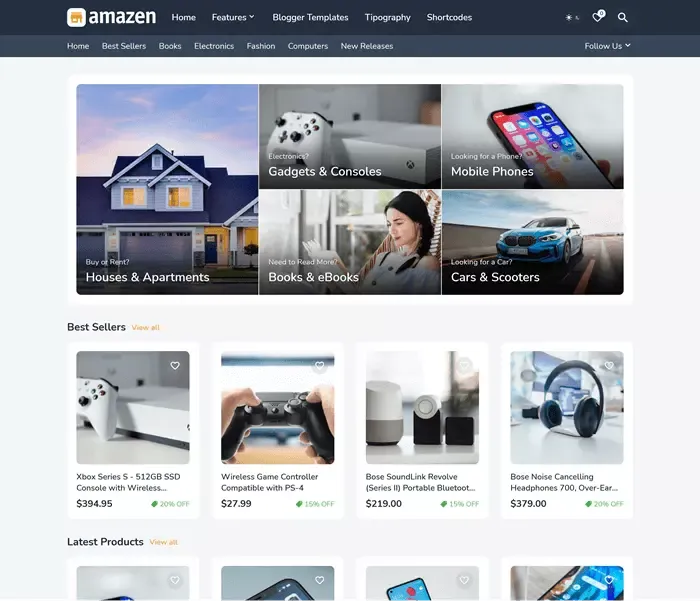How to Choose the Perfect Domain for Your Blog
A good domain name is crucial for any blog or website, as it serves as the online identity of the brand. It is the first thing that visitors see and remember about your blog, and it can have a significant impact on the success of your online presence.
When choosing a domain name, there are several important factors to consider. These include the niche of your blog, the length and memorability of the domain name, the top-level domain (TLD), and the potential for copyright infringement. By considering these factors, you can choose a domain name that will help your blog stand out and attract the right audience.
In this blog post, we will discuss these factors in detail and provide tips for choosing the perfect domain name for your blog. Whether you are starting a new blog or looking to rebrand your existing one, this guide will help you make an informed decision about your domain name.
Identify Your Blog’s Niche
Identifying your blog's niche is an essential first step in choosing a domain name. Your niche will help you define your target audience, and your domain name should reflect this.
For example, if you run a food blog, you may want to include relevant keywords such as "food," "recipe," or "cooking" in your domain name. Similarly, if you write about travel, you may want to include words like "adventure," "journey," or "wanderlust" in your domain name.
It's also important to make sure that your domain name is relevant to your niche. For example, if you run a fitness blog, a domain name like "HealthyLiving.com" would be more relevant than "GreatDealsOnline.com."
Here are a few examples of how different niches can influence domain name choices:
- A fashion blog: ChicStyle.com, FashionistaBlog.com, TrendyThreads.net
- A technology blog: WiredTech.com, TechTrends.net, GadgetGenius.net
- A travel blog: RoamingGypsy.com, AdventureAwaits.net, TravelTales.net
Remember, your domain name is a crucial part of your branding, and it should represent your blog's niche and appeal to your target audience. By choosing a relevant and appropriate domain name, you can help visitors understand what your blog is about and attract the right audience to your site.
Keep It Short and Memorable
When choosing a domain name for your blog, it's important to keep it short and memorable. A short and memorable domain name is easier for people to remember, type, and share with others. It also helps create a strong brand identity that can distinguish your blog from others.
Here are some examples of successful blogs with short and memorable domain names:
- Mashable.com: A popular blog about technology and digital culture.
- Buzzfeed.com: A website that focuses on viral news and entertainment.
- Problogger.com: A blog that provides tips and advice for bloggers.
Here are some tips for creating a short and memorable domain name:
Keep it simple: Choose a domain name that is easy to spell and pronounce. Avoid using complicated words or numbers that may confuse visitors.
Use keywords: Incorporate relevant keywords related to your niche to help visitors understand what your blog is about.
Use alliteration: Using alliteration in your domain name can make it more memorable and catchy.
Brainstorm with others: Get feedback from friends, family, or colleagues to come up with creative ideas for your domain name.
Consider the TLD: Choose a TLD that is easy to remember and relevant to your niche. For example, .com is a popular TLD that is widely recognized, but there are other options such as .net, .org, and more.
By keeping your domain name short and memorable, you can create a strong online presence that is easy for people to remember and share with others.
Choose a Top-Level Domain
When choosing a domain name for your blog, you also need to consider the top-level domain (TLD). The TLD is the extension at the end of your domain name, such as .com, .net, or .org. There are several different types of TLDs available, each with its own advantages and disadvantages.
Here are the different types of top-level domains available:
Generic top-level domains (gTLDs): These are the most popular types of TLDs, and they include .com, .net, .org, and .info.
Country code top-level domains (ccTLDs): These TLDs are specific to a particular country or region, such as .uk for the United Kingdom, .ca for Canada, and .eu for the European Union.
New top-level domains (nTLDs): These are newer TLDs that have been introduced in recent years, such as .blog, .shop, .app, and .club.
Here are the pros and cons of each type of top-level domain:
gTLDs: These TLDs are the most widely recognized and respected. They are easy to remember and great for global brands. However, they are also the most competitive and can be more expensive.
ccTLDs: These TLDs can help your website rank higher in local search results, and they can also add credibility for local audiences. However, they may be less recognizable for global audiences, and they may have stricter registration requirements.
nTLDs: These TLDs can be a great way to stand out from the crowd and add personality to your brand. However, they may be less recognizable than traditional TLDs, and they may not be as trusted by users.
Here are some recommendations for which top-level domain to choose:
- If you're targeting a global audience, a .com domain is still the most recognized and respected option.
- If you're targeting a specific country or region, consider using a ccTLD.
- If you want to add personality to your brand, consider using an nTLD, but be aware of the potential drawbacks.
Ultimately, the TLD you choose will depend on your blog's niche, target audience, and branding goals. Choose a TLD that fits with your overall strategy and helps you achieve your goals.
Avoid Copyright Infringement
When choosing a domain name for your blog, it's important to avoid copyright infringement. Using a domain name that infringes on someone else's trademark can lead to legal issues and damage your brand reputation. Here are some tips for making sure your domain name doesn't infringe on anyone else's trademark:
Conduct a trademark search: Use a trademark search tool to check if your domain name is similar to any registered trademarks. This will help you avoid any potential legal issues down the line.
Avoid using someone else's brand name: Avoid using a brand name or trademark that belongs to someone else. This can lead to legal action and damage your reputation.
Be unique: Choose a domain name that is unique and not similar to any existing trademarks. This will help you stand out from the competition and avoid any potential legal issues.
Don't use variations of existing trademarks: Avoid using variations of existing trademarks, such as misspellings or adding a different word to the trademark.
The consequences of infringing on someone else's trademark can be severe. You may be required to change your domain name, pay damages, or even face legal action. This can be costly and damaging to your brand reputation.
See Also: How to Setup Custom Domain for Blogger
Conclusion
Choosing the perfect domain name for your blog is a critical decision that can affect your online presence and branding. Here's a quick recap of the key factors to consider when choosing a domain name:
- Identify your blog's niche and make sure your domain name is relevant to it.
- Keep your domain name short and memorable to make it easy for your readers to remember.
- Choose the right top-level domain (TLD) for your blog, depending on your target audience and branding goals.
- Avoid copyright infringement by conducting a trademark search and avoiding using someone else's brand name.
In conclusion, choosing the perfect domain name for your blog requires careful consideration of several factors. By following the tips and recommendations outlined in this post, you can choose a domain name that resonates with your audience, reflects your brand identity, and helps you achieve your goals. Remember that your domain name is an important part of your overall branding strategy, so take your time to choose the right one.







